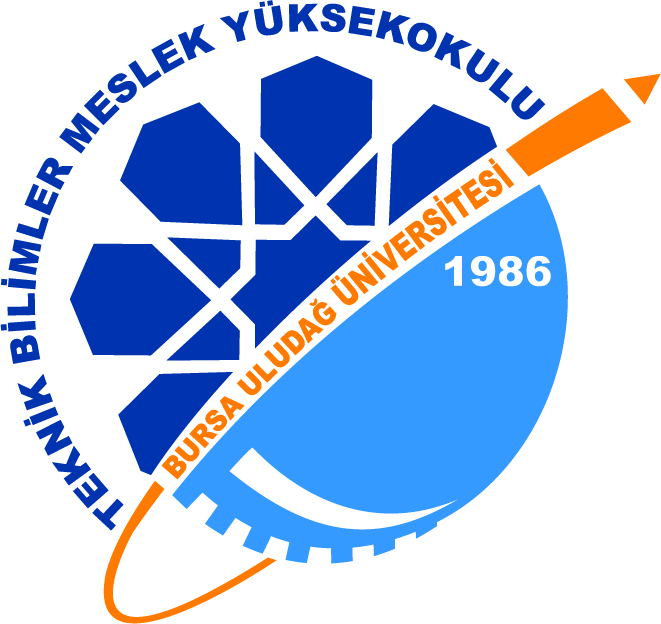Abstract
It is impossible to deny the contribution of plastics to modern healthcare. However, plastic has a versatile structure that can adapt to the dynamic nature of the healthcare industry. So much so that it can even be considered unrivaled in this sense; it has been proven to provide sterility, quality, durability, and, most importantly, patient and healthcare worker safety. A pharmaceutical product or drug is defined as any chemical substance, natural or synthetic, that has a medical or pharmacological effect on the body. Pharmaceutical packaging, on the other hand, is a protective material containing the drug form for pharmaceutical use, some of which come into direct contact with it. With endless design applications, plastics are found in everything from syringes, tubes, and IV bags to prosthetics, prescription bottles, and sterile packaging. Plastics are easy to produce, cost-effective, lighter, and safer to transport than their predecessors, such as metal and glass. In the modern healthcare industry, packaging is essential in the delivery of healthcare equipment and products. While plastics are vital, it may not be suitable to highlight the health hazards of a few types of plastic. Considering that plastics are momentarily removed from modern life, it may create severe global problems by thinking about what might be missing from the life cycle. This research touched upon the unrivaledness of plastics in the health sector and pharmaceutical packaging and also revealed how important they are for modern life.
Pharmaceutical packaging, blisters, ampoules, strips, and plastic bottles are the primary packaging that directly contacts the product. The packaging system has a secondary packaging that includes the primary packaging in its general structure. As a general function, secondary packaging is sales packaging. It persuades the customer by providing promotional and informative functions. The system flow continues with tertiary packaging, providing additional protection in storage. This system also protects flexible and delicate packaging from rough handling during transportation. New and unique packaging can also be made for transportation. This packaging, which is purely for transportation purposes, is quaternary, and all kinds of materials can be used in its construction. Product advertising is rarely seen in quaternary packaging, which can be optional. Most symbols show the packaging's safety, transportation method, storage, and temperature. Although plastics are used at all levels of the pharmaceutical packaging system, they are most commonly used as primary packaging. Plastic's flexible and durable structure often hides its negative but critical side, such as permeability. The passage of gases, vapors, or liquids from the environment into the plastic container is called "penetration" or "permeability." If the drug is susceptible to hydrolysis or oxidation, water vapor, and oxygen penetration through the plastic wall into the dosage form may be problematic. In other words, gas permeability may be possible depending on the ambient temperature. However, this is not true for all types of plastic. Hydrophilic plastic materials, especially nylon, are poor barriers to water vapor. In contrast, hydrophobic materials such as polyethylene are better barriers.
The widespread use of plastic in the healthcare sector has caused it to come to mind in packaging. The pharmaceutical industry is widespread in the use of plastic packaging. On the other hand, the wrong image of plastic in daily life does not cover all types. While plastic continues to be used in healthcare products, its high recycling potential also indicates that it is environmentally friendly. With this research, we have seen the harms of some plastics and touched upon the entire plastics industry and the groundlessness of the concerns created by plastic packaging. So much so that the use of plastics in disposable products due to the largely unproven risk of infection or convenience is insufficient to reduce the dependence on plastic in pharmaceutical packaging and healthcare; however, this article also reveals that the linear model of plastic production, consumption, and disposal should be questioned.
References
- Baltacı, A. (2019). Nitel araştırma süreci: Nitel bir araştırma nasıl yapılır?. Ahi Evran Üniversitesi Sosyal Bilimler Enstitüsü Dergisi, 5(2), 368-388. DOİ: https:// 10.31592/aeusbed.598299
- Canefe, K., Enver, İ. (1981). Tarım İlaçlarının Ambalajlanmasında Kullanılan Plastik Materyaldeki Pestisit Kalıntıları Üzerinde Araştırmalar. Ankara Eczacılık Fakültesi Mecmuası. 11(1), 47-68.
- Gerrans, J., Parastou, D., Finlay, K. ve Sherratt, R. S. ( 2023). An Efficient Smart Pharmaceutical Packaging Technology Framework to Assess the Quality of Returned Medication through Non- Intrusively Recording Storage Conditions after Dispensation. Technologies. 11 (75), 1-24. https://doi.org/10.3390/ technologies11030075
- HPRC. (2019). Circularity for Healthcare Plastics: The Challenges and Opportunities. Luxembourg: https://eur-lex.europa.eu. https://eur-lex.europa.eu
- Hui Terence, K. L., Muhammed, B., Donyai, P., McCrindle, R. ve Sherratt, R. S. (2020). Enhancing Pharmaceutical Packaging through a Technology Ecosystem to Facilitate the Reuse of Medicines and Reduce Medicinal Waste. Pharmacy Journal. 8 (58), 1-18. https://doi.org/10.3390/pharmacy8020058
- ILO (2021). Plastics and the world of work. Genève: ilo.org.
- Koparde, A. A., Doijad, R.C. ve Magdum, C.S. (2019). Natural products in drug discovery. In:Pharmacognosy. Medicinal Plants. IntechOpen.
- Mehta, M. R. (?). Pharmaceutical Packaging, Component And Evaluation. Department of Pharmaceutics and Pharmaceutical Technology Shri Sarvajanik Pharmacy College.
- Mohd Sabee, M. M. S., Nguyen, T.T.U., Ahmad, N. Ve Abdul Hamid, Z.A (2021). Plastics Packaging for Pharmaceutical Products. M. M. Mohd Sabee içinde, Plastics Packaging for Pharmaceutical Products. ?(?), 1-34. https://doi.org/10.1016/B978-0-12-820352-1.00088-2 Rizan, C., Mortimer, F., Stancliffe, R. ve F. Bhutta, M.(2020). Plastics in healthcare: time for a re- evaluation. Journal of the Royal Society of Medicine. 113(2), 49–53. https://doi.org/ 10.1177/0141076819890554
- Sadek, A. Z., Jahan, S.M. (2017). Pharmaceutical Plastic Packaging Market in Bangladesh: A Study on Demand-Supply Scenario and Strategic Imperatives for Local Enterprises. International Journal of Business and Management. 12(3), 232-240. https://doi.org/10.5539/ijbm.v12n3p232
- Salmenperä, H., Kauppi, S., Dahlo, H. ve Fjäder, P. (2022). Increasing the Circularity of Packaging along Pharmaceuticals V alue Chain. Sustainability. 14(4715), 1-17. https://doi.org/10.3390/su14084715
- Wen, H., Jung, H. ve Li, X. (2015). Drug Delivery Approaches in Addressing Clinical Pharmacology- Related Issues: Opportunities and Challenges. The AAPS Journal. 17 (6), 1327-1340. https://doi.org/10.1208/s12248-015-9814-9
- Zadbuke, N., Shahi, S., Gulecha, B., Padalkar, A. ve Thue, M. (2013). Recent trends and future of pharmaceutical packaging technology. Journal of Pharmacy and Bioallied Sciences. 5(2), 98- 110. https://doi.org/10.4103/0975-7406.111820
Abstract
Plastiklerin modern sağlık hizmetlerine katkılarını inkâr etmek mümkün değildir. Ancak plastiğin, sağlık sektörünün dinamik doğasına uyum sağlayabilecek kadar çok yönlü bir yapısı vardır. Öyle ki bu anlamda rakipsiz bile sayılabilir. Sterilite, kalite, dayanıklılık ve en önemlisi hasta ve sağlık çalışanı güvenliği gibi faydalar sağladığı kanıtlanmıştır. Farmasötik ürün veya ilaç, vücutta tıbbi veya farmakolojik etkisi olan doğal veya sentetik her türlü kimyasal madde olarak tanımlanır. İlaç ambalajları ise farmasötik kullanıma yönelik olarak ilaç formunu içinde bulunduran ve bir kısmı onunla doğrudan temas eden koruyucu ve muhafaza edici malzemelerdir. Sonsuz tasarım uygulamalarıyla plastikler şırıngalardan, tüplerden ve serum torbalarından protezlere, reçeteli şişelere ve steril ambalajlara kadar her şeyde bulunur. Çünkü plastiklerin üretimi kolay, uygun maliyetli, metal, cam gibi öncülleriyle karşılaştırıldığında nakliyesi daha hafif ve güvenlidir. Modern sağlık sektöründe ambalajlama, sağlık araç-gereç ve ürünlerinin ulaştırılmasında son derece önemlidir. Plastikler bu denli yaşamsal öneme sahipken, birkaç plastik türünün sağlığa olan zararlarını ön plana çıkartmak doğru olmayabilir. Modern yaşantıdan plastiklerin bir an çıkartıldığı düşünülürse, yaşam döngüsünden nelerin eksik olabileceğini düşünmek ile ciddi küresel sorunlar yaratabilir. Bu araştırma, plastiklerin sağlık sektöründe, ilaç ambalajlamasında rakipsizliğine değinirken, modern yaşantı için ne kadar önemli olduğunu da ortaya koymuştur. Bu araştırma ile bazı plastiklerin zararlarını görüp, tüm plastik sektörüne ve plastik ambalajların yarattığı endişelerin yersizliğine değinilmiştir. Öyle ki plastiklerin büyük ölçüde kanıtlanmamış enfeksiyon riski veya kolaylık nedeniyle tek kullanımlık ürünler de kullanılması gerek ilaç ambalajlamasında gerekse sağlık hizmetlerinde plastiğe olan bağımlılığın azaltılması için yeterli değildir. Ancak u makale ile plastik üretiminin, tüketiminin ve imhasının doğrusal modelini sorgulanması gerektiğini de ortaya koymaktadır.
Keywords
References
- Baltacı, A. (2019). Nitel araştırma süreci: Nitel bir araştırma nasıl yapılır?. Ahi Evran Üniversitesi Sosyal Bilimler Enstitüsü Dergisi, 5(2), 368-388. DOİ: https:// 10.31592/aeusbed.598299
- Canefe, K., Enver, İ. (1981). Tarım İlaçlarının Ambalajlanmasında Kullanılan Plastik Materyaldeki Pestisit Kalıntıları Üzerinde Araştırmalar. Ankara Eczacılık Fakültesi Mecmuası. 11(1), 47-68.
- Gerrans, J., Parastou, D., Finlay, K. ve Sherratt, R. S. ( 2023). An Efficient Smart Pharmaceutical Packaging Technology Framework to Assess the Quality of Returned Medication through Non- Intrusively Recording Storage Conditions after Dispensation. Technologies. 11 (75), 1-24. https://doi.org/10.3390/ technologies11030075
- HPRC. (2019). Circularity for Healthcare Plastics: The Challenges and Opportunities. Luxembourg: https://eur-lex.europa.eu. https://eur-lex.europa.eu
- Hui Terence, K. L., Muhammed, B., Donyai, P., McCrindle, R. ve Sherratt, R. S. (2020). Enhancing Pharmaceutical Packaging through a Technology Ecosystem to Facilitate the Reuse of Medicines and Reduce Medicinal Waste. Pharmacy Journal. 8 (58), 1-18. https://doi.org/10.3390/pharmacy8020058
- ILO (2021). Plastics and the world of work. Genève: ilo.org.
- Koparde, A. A., Doijad, R.C. ve Magdum, C.S. (2019). Natural products in drug discovery. In:Pharmacognosy. Medicinal Plants. IntechOpen.
- Mehta, M. R. (?). Pharmaceutical Packaging, Component And Evaluation. Department of Pharmaceutics and Pharmaceutical Technology Shri Sarvajanik Pharmacy College.
- Mohd Sabee, M. M. S., Nguyen, T.T.U., Ahmad, N. Ve Abdul Hamid, Z.A (2021). Plastics Packaging for Pharmaceutical Products. M. M. Mohd Sabee içinde, Plastics Packaging for Pharmaceutical Products. ?(?), 1-34. https://doi.org/10.1016/B978-0-12-820352-1.00088-2 Rizan, C., Mortimer, F., Stancliffe, R. ve F. Bhutta, M.(2020). Plastics in healthcare: time for a re- evaluation. Journal of the Royal Society of Medicine. 113(2), 49–53. https://doi.org/ 10.1177/0141076819890554
- Sadek, A. Z., Jahan, S.M. (2017). Pharmaceutical Plastic Packaging Market in Bangladesh: A Study on Demand-Supply Scenario and Strategic Imperatives for Local Enterprises. International Journal of Business and Management. 12(3), 232-240. https://doi.org/10.5539/ijbm.v12n3p232
- Salmenperä, H., Kauppi, S., Dahlo, H. ve Fjäder, P. (2022). Increasing the Circularity of Packaging along Pharmaceuticals V alue Chain. Sustainability. 14(4715), 1-17. https://doi.org/10.3390/su14084715
- Wen, H., Jung, H. ve Li, X. (2015). Drug Delivery Approaches in Addressing Clinical Pharmacology- Related Issues: Opportunities and Challenges. The AAPS Journal. 17 (6), 1327-1340. https://doi.org/10.1208/s12248-015-9814-9
- Zadbuke, N., Shahi, S., Gulecha, B., Padalkar, A. ve Thue, M. (2013). Recent trends and future of pharmaceutical packaging technology. Journal of Pharmacy and Bioallied Sciences. 5(2), 98- 110. https://doi.org/10.4103/0975-7406.111820
Details
| Primary Language | Turkish |
|---|---|
| Subjects | Fine Arts |
| Journal Section | Research Articles |
| Authors | |
| Early Pub Date | May 19, 2024 |
| Publication Date | May 20, 2024 |
| Submission Date | February 6, 2024 |
| Acceptance Date | April 27, 2024 |
| Published in Issue | Year 2024 Volume: 5 Issue: 1 |









Uluslararası Sanat ve Tasarım Dergisi USTAD Creative Commons Atıf 4.0 Uluslararası Lisansı ile lisanslanmıştır. © USTAD 2020 / ustad@uludag.edu.tr / eISSN: 2979-9775


